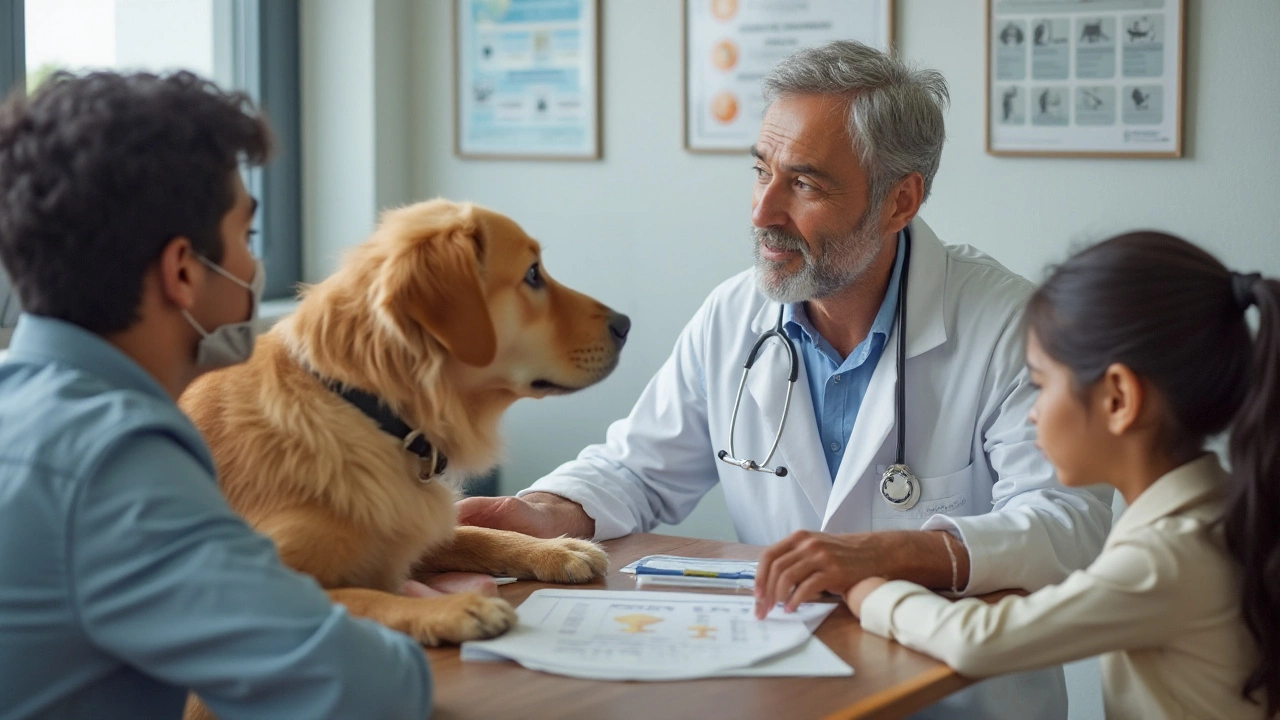Dog Vaccinations: What Every Owner Should Know
Vaccines are like a safety net for your dog. They stop nasty diseases before they even start. If you’ve ever wondered which shots are truly needed or how often to schedule them, you’re in the right spot. Below is a simple, no‑fluff rundown that you can follow right away.
Core vaccines every dog needs
Vets agree on a short list of must‑have shots. These protect against the most common and dangerous illnesses:
- Distemper – hurts the brain and lungs.
- Parvovirus – causes severe vomiting and diarrhea.
- Adenovirus (type‑2) – leads to liver disease.
- Rabies – a legal requirement in most states and deadly to both dogs and people.
- Parainfluenza – a respiratory bug that spreads fast.
These are called “core” because they guard against diseases that are everywhere, regardless of where you live.
When to give the shots and why boosters matter
New puppies get their first round at 6‑8 weeks old. After that, they need a booster every 2‑4 weeks until they’re about 16 weeks old. That schedule builds solid immunity when their immune system is still learning.
After the puppy series, most vets recommend a yearly booster for core vaccines. Some dogs can switch to a three‑year schedule, but check your vet’s advice. The timing matters – if you miss a booster, you risk a gap in protection.
Non‑core vaccines, like Bordetella (kennel cough) or Leptospirosis, depend on your dog’s lifestyle. If they go to daycare, board, or hunt, those extra shots are worth considering.
Here’s a quick cheat‑sheet:
- 6‑8 wk: First distemper/parvo combo.
- 10‑12 wk: Second combo + rabies (if allowed).
- 14‑16 wk: Final combo + rabies booster.
- 1 yr: First annual booster for all core shots.
- Every 1‑3 yr: Ongoing boosters based on vet recommendation.
Keeping a simple calendar, either on your phone or a paper planner, stops you from forgetting.
So what happens after a shot? Most dogs feel fine, but a few show mild signs – a bit of soreness at the injection site, a low‑grade fever, or a temporary loss of appetite. Those reactions usually pass in a day or two. If your dog seems unusually lethargic, is vomiting, or develops a swelling that keeps getting bigger, call the vet right away.
Making the visit stress‑free helps both you and your pup. Bring a favorite toy, keep the car ride short, and give a treat right after the shot. Some owners find a calming wrap or a gentle massage useful for nervous dogs.
Wondering where to get vaccines for less money? Local animal shelters, humane societies, and some pet stores partner with vets to offer low‑cost vaccination clinics. Call ahead, confirm which shots are available, and ask about any paperwork you need.
In short, sticking to the core vaccine schedule keeps your dog safe from the worst diseases, while optional shots add extra layers of protection based on your dog’s life. Stay on top of the calendar, watch for mild side‑effects, and don’t hesitate to ask your vet any questions. Your pup’s wagging tail will thank you.

When Should You Stop Vaccinating Your Dog?
Vaccinating your dog is vital to ensure their healthy life, but knowing when to stop isn't always clear. This article explores age-related vaccination guidelines, special considerations for senior pets, and how to discuss a personalized vaccination plan with your veterinarian. It provides insights into vaccine types and their necessity over a dog’s lifespan. Understanding these aspects can help make informed decisions about your dog's healthcare.
read more



